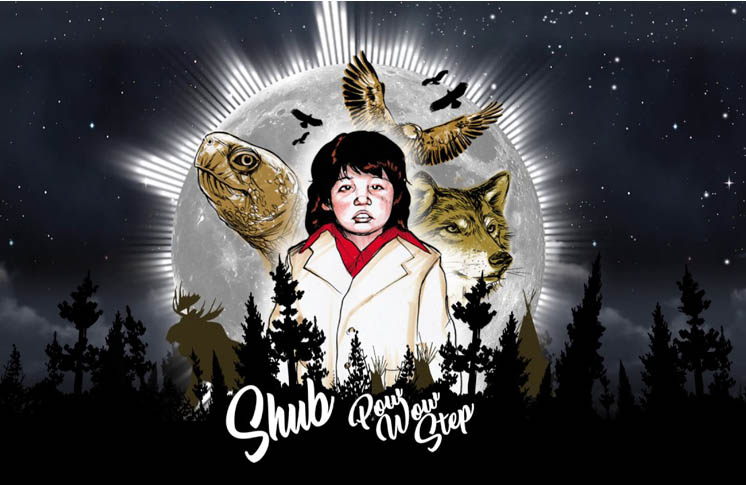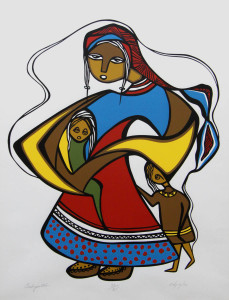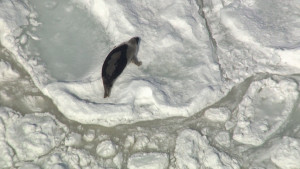
In the early days of a new year, we would like to take this time to reflect on the past 365 days while looking to the challenges and successes ahead. Here’s a MUSKRAT must know about Indigenous media round-up of moments that took shape this year and continue to inspire and call us to action.

1. National Inquiry into Missing and Murdered Indigenous Women and Girls
The Government of Canada launched an independent national inquiry into missing and murdered Indigenous women and girls. Dr. Janet Smylie (Métis) of The well Living House along with Magen Cywink (Whitefish River First Nation) co-wrote the following editorial piece published in the Canadian Public Health Association Journal titled, “Murdered and Missing Women Inquiry: Working with Families to prepare for the National Inquiry”, which offers important information for supporting families impacted in the inquiry. Moving forward into 2017, raising awareness in communities is important to creating safe spaces for Indigenous women and girls.
2. Muskrat Falls Hyrdoelectric Dam Hunger Strike
Nalcor Energy is building a hydroelectric dam at Muskrat Falls in Labrador to generate “renewable energy”. Nunatsiavut Lands and Natural Resources, Minister Darryl Shiwak says the dam will; “compromise Inuit health and rights down the stream.” Since 2011 the project has been protested by Inuit and local community members. A study conducted by researchers from Harvard University in 2015 determined that methylmercury levels would rise with Muskrat Falls flooding, increasing the potential for mercury contamination in traditional food sources like fish and seal downstream in Lake Melville. In June 2016, we saw the largest demonstration against methylmercury to date and in October 2016, Billy Gauthier, Jerry Kohlmeister and Delilah Saunders went on a hunger strike to protest the project. Premier Dwight Ball eventually met with local Indigenous governments and agreed to reduce the scale of the flooding and to do more tests on methylmercury contamination. Water protectors in Labrador continue to stand for their right to clean water and traditional food sources.
3. No Dakota Access Pipeline (NoDPAL)
The Standing Rock Sioux Tribe took a stand against the Dakota Access Pipeline this year and mobilized thousands of Indigenous and non-Indigenous water protectors in protest of a $3.8 billion project that would cross under the Missouri River and threaten their drinking water. Social media played a major role in bringing awareness of this movement. Celebrities like Jesse Jackson, Willie Nelson, Neil Young, Mark Ruffalo, Chris Hemsworth, Samuel L Jackson and Scarlett Johansson took to Twitter, Facebook and Instagram to stand in solidarity. On the front lines, water protectors were met with fierce violence from state police and private security. Mace, noise guns, water canons in freezing temperatures, attack dogs, and non-lethal grenades were some of tactics used by law enforcement and private security to protect corporate interest. As we move into 2017, there will be more standing up to the big oil industry as corporations and governments continue disregard Indigenous rights and treaty relationships.
4. APTN Breaks Story on Author Joseph Boyden’s shape-shifting Indigenous identity
In late December APTN’s Jorge Barrera produced a detailed report demonstrating no evidence to support Joseph Boyden’s claim to Indigenous family genealogy dating back to the 1800’s. Joseph Boyden, claimed to be of Anishinaabe, Métis, Nipmuc and Mi’kmaq ancestry, and became a nationally acclaimed author and spoke on behalf of Indigenous issues. Discussions sparked within our communities with Joseph Boyden responding to the APTN story with this statement. This fuelled more debate including a response from MUSKRAT Magazine Editor, Rebeka Tabobondung.
5. Sixties Scoop Class Action Lawsuit Against the Government of Ontario
From 1965 to 1984, provincial and federal governments enacted policies affecting as many as 16,000 Indigenous children through the apprehension of Indigenous children through child protection services. Known as the “Sixties Scoop” many children were placed in non-Indigenous households, some as far as Europe. Prior to 1980, “the child welfare system did not require, nor did it expect, social workers to have specific training in dealing with children in Aboriginal communities.” (UBC Indigenous Foundations). Indigenous people who were affected by this policy submitted a $1.8 billion class action lawsuit against the provincial government arguing loss of cultural identity. The Honourable Justice Edward Belobaba of the Ontario Superior Court of Justice heard the arguments and hopes to have a decision by mid-late January, 2017. Regardless of the outcome, it is hoped that as a Nation we will continue to support those who experienced systematic cultural genocide.
6. Jordan’s Principle and the Canadian Government’s Failure to Comply
I don't get it Why isn't ?? gov't racial discrimination towards 163K kids & failure 2 obey legal orders to stop a top news story in 2016?
— Cindy Blackstock (@cblackst) January 3, 2017
In January 2016, the Canadian Human Rights Tribunal ruled in favour of Jordan’s Principle which speaks to First Nation children who live on reserve. The ruling found that Indigenous and Northern Affairs Canada, the First Nation Child and Family Services Program and related funding models are discriminatory and contrary to section 5 of the Canadian Human Rights Act. However for the past year, there has been little movement from the federal government to implement Jordan’s Principle. Jordan’s Principle is a child-first principle named in memory of Jordan River Anderson, a First Nations child from Norway House Cree Nation in Manitoba. Born with complex medical needs, Jordan spent more than two years in hospital while the Province of Manitoba and the federal government argued over who should pay for his at home care. Jordan died in the hospital at the age of five years old, never having spent a day in his family home”.

7. Daphne Odjig Passed on to the Spirit World
In October 2016, 97 year old Daphne Odjig passed away in Kelowna, British Columbia. Odjig who was from Wikwemikong Unceded First Nation, was a true visionary who pushed Indigenous visual culture. Artist, curator and educator, Bonnie Devine wrote a beautiful article for Canadian Art about Daphne Odjig’s tremendous contributions and achievements as an Anishnaabek artist. The beauty of Daphe’s art will continue to inspire many more generations of artists around the world.
8.DJ Shub releases debut EP PowWowStep
This year DJ Shub released his highly anticipated PowWowStep EP, a solo project that embodies the skill and excellence of the award winning DJ. Along with the drop of the EP, came a powerful video for the track, “Indomitable” featuring Northern Cree Singers. The music video features footage from the Grand River Champion of Champions Pow Wow that takes place in Six Nations every year and showcases indomitable Native pride in celebrating our culture through dance. Plus you may recognize some familiar family members and friends on the video!

9. Angry Inuk earns Best Documentary Award at ImaginNATIVE Media Arts+Film Festival
Filmmaker, Alethea Arnaquq-Baril was awarded the Alanis Obamsawin Best Documentary Award at the 17th Annual ImagineNATIVE Media Arts + Film Festival for “Angry Inuk”, a powerful film that challenges the long-established misconceptions of seal hunting and Inuit resistance. Alanis Obamsawin presented the award to Alethea Arnaquq-Baril in Toronto.









